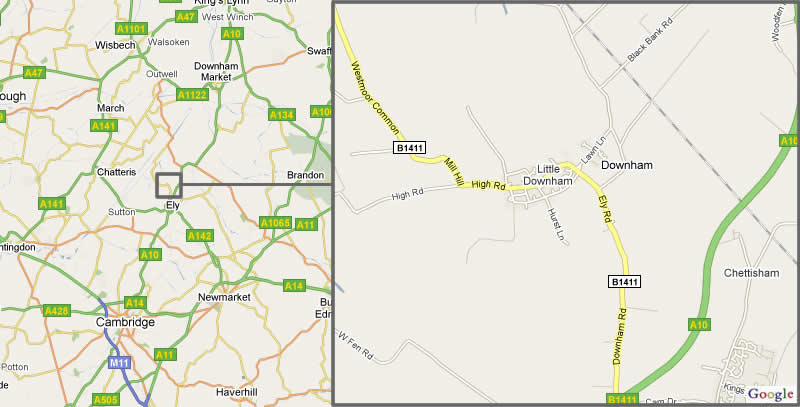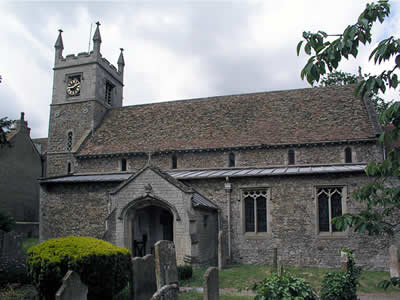Samuel Lewis's Topographical Gazeetter 1831
DOWNHAM, a parish in the hundred and Isle of ELY, county of CAMBRIDGE, 3 miles (N.N.W.) from Ely, containing 1350 inhabitants. The living is a rectory, rated in the king's books at £17.2.1., and in the peculiar jurisdiction and patronage of the Bishop of Ely. The church is dedicated to St. Leonard. A palace at this place was formerly one of the principal residences of the diocesans, but since the arrest of Bishop Wren, by order of parliament, in 1642, it has gone to decay; there are still considerable remains, the offices having been converted into a farm-house.
A BRIEF HISTORY OF ELY and neighbouring villages in the Isle by J.H. Clements 1868
DOWNHAM parish extends over an area of 10,550 acres, according to the parliamentary return, and 9,575 exclusive of 490 occupied by roads and rivers, according to local survey. The population is about 2,300 souls. The amount of assessed property is about £12,000. The soil is verv rich. The Bishop of Ely and the Master and Fellows of Clare college, Cambridge, are among the principal proprietors of the place. Downham was one of the manors given to the convent of Ely by Duke Brithnoth. On the division of the possessions of the church, in the time of Hervey the first bishop, Downham was one of those annexed to the see, and became one of the chief residences of its prelates. Bishop Wren, who was arrested here, and sent prisoner to the tower in 1642, was the last occupant of Downham palace. Having been suffered to go to decay during the interregnum, and no repairs having been attempted by the succeeding prelates, Bishop Patrick, who was promoted to this see in 1691, procured an Act of Parliament to enable him to lease out the mansion and demesnes, and to secure himself and his successors from delapidations. The living is a rectory, a peculiar in the deanery of Ely, valued in the King's books at £17 2s. 1d., but now returned at £1,108. nett, per annum. The Bishop of Ely is patron, and the Rev. F. Fisher, incumbent. The tithes were committed in 1838 for a rent charge of £1,280., and there are about 140 acres of grebe land. Here are chapels for the Baptists and Methodists, and there are also two Methodist chapels in the Fens. The Town Land consists of 180 acres and 18 tenements; the cottages are let rent free to the poor, and the rent of the land (£158. per annum,) is applied to the use of the poor, &c. The School is held in the ancient Guildhall, the master being allowed £6. per annum, out of the town estate, for which 15 children are taught free!
Extracts from Kelly's Directory - Cambridgeshire - 1929
The church of St. Leonard is a structure of rubble in the Transition Norman and Early English styles, consisting of chancel, clerestoried nave of five bays, aisles, south porch and an embattled western tower, with pinnacles, containing 4 bells, two of which are dated 1659 : the clerestory windows are very small and are deeply splayed internally : the inner porch doorway is a good example of Transition Norman : in the chancel is an arcaded double piscina with cinquefoil-headed arch, but portions of the arch and one basin have been cut away to admit the insertion of a window : the rood screen is of carved oak : the chancel was restored and a vestry and organ chamber erected in 1890, at a cost of £1,144 : in 1897 and 1899 extensive restorations were carried out at a cost of £800 : the church had been previously reseated, and now affords 300 sittings : the north aisle was restored in 1912. The register dates from the year 1558, but is not continuous.
|

